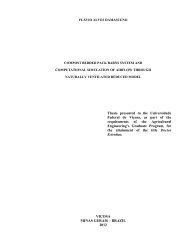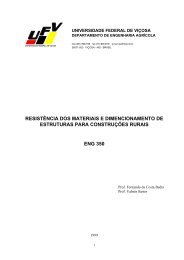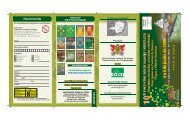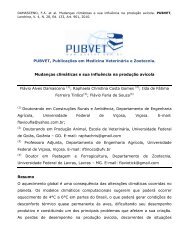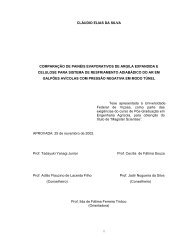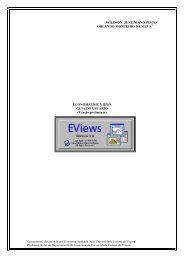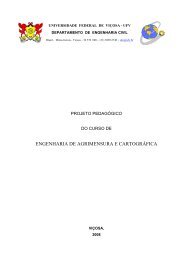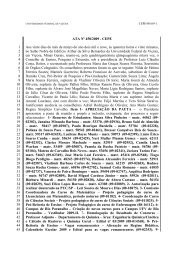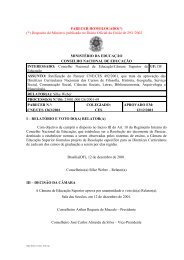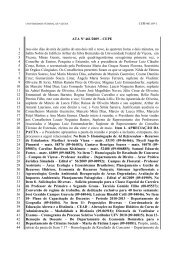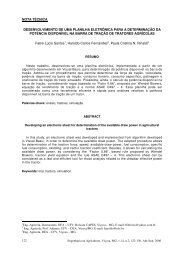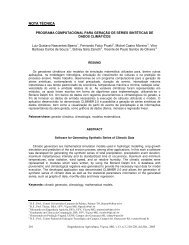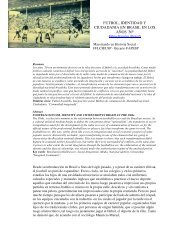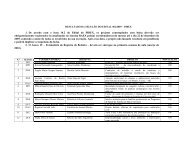ALKALOID BIOSYNTHESIS IN PLANTS: Biochemistry, Cell ... - UFV
ALKALOID BIOSYNTHESIS IN PLANTS: Biochemistry, Cell ... - UFV
ALKALOID BIOSYNTHESIS IN PLANTS: Biochemistry, Cell ... - UFV
You also want an ePaper? Increase the reach of your titles
YUMPU automatically turns print PDFs into web optimized ePapers that Google loves.
50 FACCH<strong>IN</strong>I<br />
enhancer for basal expression, and two separate elicitor-responsive elements<br />
were found between −99 and −87, and between −87 and −37. In vitro binding<br />
of nuclear factors to the −572 to −37 region of the TDC promoter has also<br />
been described (126). Two binding activities that interact with multiple TDC promoter<br />
regions were identified as GT-1 and 3AF1 in tobacco and C. roseus nuclear<br />
protein extracts. Mutagenesis of the GT-1 binding sites did not affect basal or<br />
elicitor-induced expression, but did reduce TDC promoter activation by UV light.<br />
Only UV-B wavelengths were shown to induce TIA accumulation and TDC expression<br />
in C. roseus, suggesting the involvement of a specific receptor (123).<br />
Loss-of-function analysis revealed redundant UV-responsive elements in the TDC<br />
promoter between −99 and +198 (123).<br />
The coordinate accumulation of transcripts suggests that TDC, STR, and CPR<br />
genes are regulated by common nuclear factors in response to elicitor treatment<br />
and UV light (108, 132). Deletion of the CPR promoter to −366 eliminated the<br />
elicitor-inducible expression observed with a 632-bp promoter (90). The −632 to<br />
−366 region of the CPR promoter also contains strong GT-1 binding sites. The<br />
main elicitor-responsive sequences of the STR1 promoter were identified in the<br />
−339 to −145 region (131). Again, GT-1 was shown to bind to this and other<br />
regions of the STR1 promoter. Despite the strong interaction of GT-1 with TDC,<br />
STR1, and CPR promoters, it remains to be determined whether GT-1 binding sites<br />
play a role in gene expression in vivo.<br />
Other transcription factors are undoubtedly involved in the basal expression<br />
of the TDC, STR1, and CPR genes. A G-box motif at −105 was shown to bind<br />
G-box binding factors (GBFs) in vitro, but was not essential for the elicitor-induced<br />
expression of STR1 in vivo (131). This G-box element also interacts with tobacco<br />
nuclear factors and the G-box-binding factor TAF-1 (124). Mutation of the G-box<br />
motif prevented binding of these factors and reduced the functional activity of<br />
constructs containing tetramers of the STR1 G-box sequence. A G-box tetramer<br />
fused only to a TATA-box conferred seed-specific expression in transgenic tobacco,<br />
but required the enhancer region from the CaMV promoter for expression in leaves.<br />
These results suggest that sequences flanking the G-box motif determine STR1<br />
promoter activity in different tissues (124).<br />
A GCC-box-like element in the −100 to −58 region of the STR1 promoter is<br />
necessary and sufficient for JA- and elicitor-responsive expression (109). Two<br />
cDNAs encoding C. roseus AP2-domain (ORCA) proteins that bind the JA- and<br />
elicitor-responsive elements of STR1 were isolated using a yeast one-hybrid screen.<br />
The ORCA2 protein trans-activates the STR1 promoter, and expression of the<br />
ORCA2 gene is induced by elicitor and JA treatment of C. roseus cell cultures. In<br />
contrast, the ORCA1 gene is constitutively expressed. These results specifically<br />
identify a GCC-box-like element and ORCA2 in the JA- and elicitor-responsive<br />
expression of the STR1 gene.<br />
Deletion analysis has also revealed the location of regulatory domains necessary<br />
for TYDC7 and BBE1 promoter activities in a transient GUS assay system based<br />
on the microprojectile bombardment of cultured opium poppy cells (130). The



